- Home
- Travel In China > China Attractions > Hebei Attractions >
Eight Outer Temples
The Eight Outer Temples Scenic Area, to the north-east of the
Mountain Resort of Chengde, is a collective name given to 12 temples located outside Gubeikou - a section of the Great Wall. As the emperor's summer residence during the Qing Dynasty (1644-1911), the Eight Outer Temples were administered by Lifan Yuan, an administration department for the affairs of minorities such as Mongolian and Tibetan, and so the name stuck. Together with the Mountain Resort of Chengde, the temple has been as a World Heritage Site in 1994.
What to see?
The 12 temples were built in succession. Construction began in 1713 in the Qing Dynasty and completed in 1780. Six temples are now open to tourists - Putuo Zongchengzhi Temple, Puning Temple, Xumi Fushouzhi Temple, Pule Temple, Anyuan Temple, and Puyou Temple. Each one has its own particular features and special
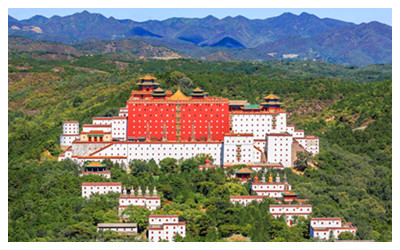
appeal.
Putuo Zongchengzhi Temple
Putuo Zongchengzhi Temple is located to the north of Mountain Resort of Chengde. It is the biggest and the most magnificent building in Eight Outer Temples. Built in 1767 imitating the style of
the Potala Palace, the temple is also named 'little Potala Palace'. For another reason that 'Putuo Zongchengzhi' is a Tibetan language meaning 'Potala Palace' in Chinese. The halls and pavilions in it were designed to naturally strew on hillside according to the hypsography. The Big Red Platform is the principle construction of the temple. The platform and the three halls on it are all with the copper gold tiles roof.
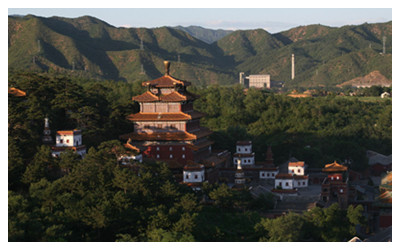
Puning Temple
Also located to the north of the Mountain Resort of Chengde is Puning temple which was built in 1755. It is also known as 'Big Buddha Temple', for a big wooden Buddhist statue housed there.
The Buddhist statue is unusual, being of Kwan-yin, standing 22.23 meters (approx. 72.93 feet) tall, with a thousand eyes and a thousand arms. It is made with five kinds of lignum - pine, cypress, elm, fir and linden, and is one of the biggest preserved wooden statues in China. Puning Temple is large in scale, about 250 meters in depth and 130 meters in width. It takes about 2 hours to walk and worship at the temple.
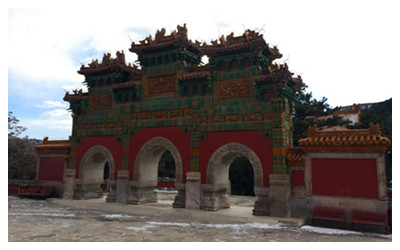 Xumi Fushouzhi Temple
Xumi Fushouzhi TempleTo the north of the Mountain Resort of Chengde and to the east of Putuo Zongchengzhi Temple, lies Xumi Fushouzhi Temple, which was built in 1780. It is said that this temple was built as a residence for Panchen Lama (head of Tibet), who traveled far to celebrate the 70th birthday of Qianlong - a famous emperor of the Qing Dynasty. The temple not only has Han characteristics such as the square kiosk and glazed tile roof, but also has characteristics of Mongolian and Tibetan nationalities, which you can see in the trapezoidal windows, Lama pagodas, and copper gold tiled roofs.
This temple has a large area, about 350 meters in depth and about 120 meters in width. It can be walked in the temple, and it takes about 1-2 hours to complete.
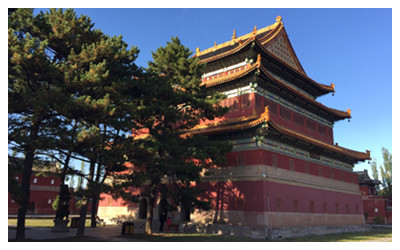 Anyuan Temple
Anyuan Temple
Anyuan Temple is commonly known as "Yili Temple" and also known as "Jinding Temple". It is one of the famous "Eight Outer Temples" in Chengde. Built in the 29th year of Qianlong (1764) during the Qing Dynasty, it was constructed following the rules of the Gulza Temple on the northern bank of the
Yili River in Xinjiang. The main hall, Pudu Hall, not only retains the national style of Xinjiang Gulza Temple, but also cleverly combines the architectural essence of the Han and Tibetan nationalities. The temple was built for the religious activities of the Mongolian Dashdawa who relocated to Rehe Province, and received the princely and pilgrimage of the monarch and nobles of Mongolia. Anyuan Tmeple wished for stability in the distance.
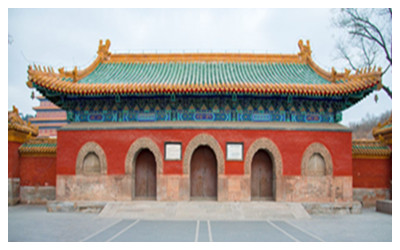 Puyou Temple
Puyou Temple
Puyou Temple is a subsidiary temple of Puning Temple. It was built in the 25th year of Qianlong in the Qing Dynasty. It is the main place where the Lamas of the Eight Temples studied. There were four schools including Xianzong Confucian classics, Tantric Confucian classics, Almanac, and Medicine. But the most worth seeing in the temple is the 500 Luohan statues, which have different looks and are of great artistic value (only 176 are left). Not only are the lamas in the Outer Eight Temples cultivated here, the lamas of various Mongolian ministries are also sent here to study scripture. The tuition fees were all provided by the Qing government. At that time, it was not only a lama school where Buddhist lamas gathered to study Buddhist classics and theories, but also an important place for religious activities. The Buddha statues enshrined in the temple are also different from other temples, including Chinese and Tibetan. It is a unique temple in the Eight Outer Temples.
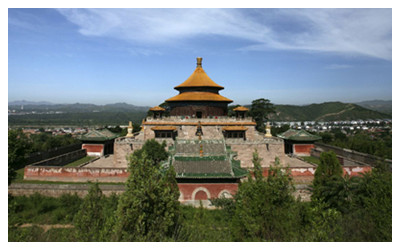
Pule Temple
Pule Temple, to be found to the northeast of the Mountain Resort of Chengde, was built in 1766. The temple building is a combination of Han and Tibetan. The western part of the temple is composed of Shanmen Gate, Tianwang Hall, Bell and Drum Tower, Side hall, and Main hall. In the east, it is Tibetan buildings. The main building is Xuguang Pavilion which appearance is similar to the Temple of Heaven in Beijing, and It is the biggest feature of the temple.
The Eight Outer Temples were built by the Qing government to strengthen a unity with the minorities, thus the temples not only feature Han style, but also the Mongolian and Tibetan styles, with the symbolic meaning of unity in China. The architectures, inscriptions, sculpture, and murals in these temples are important materials for the study of history, culture, religion, and architectural art.
Travel Tips
Add: to the north-east of the Mountain Resort of Chengde, Chengde City,Hebei Province
Tel: 0314-2163072
Entrance Fees: CNY 210
Opening Hours:08:00-17:00


 Xumi Fushouzhi Temple
Xumi Fushouzhi Temple Anyuan Temple
Anyuan Temple Puyou Temple
Puyou Temple
 Ask Questions ?
Ask Questions ?